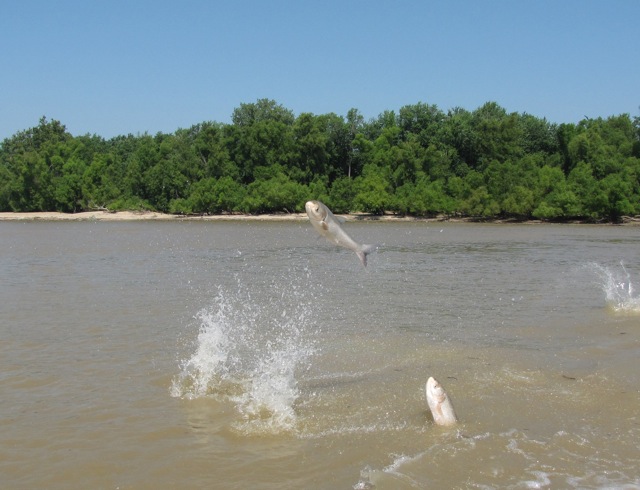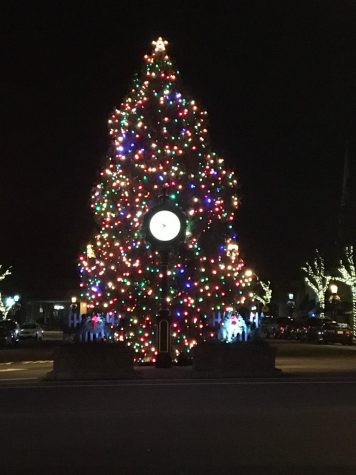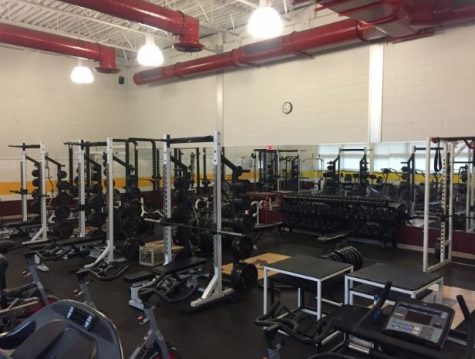The Benefits of Invasive Species
Asian carp jumps out of the water
Invasive species: some say it’s a deceiving misnomer that was originally coined to describe a species that did not belong in a given environment or harmed the ecosystem of any area. Others believe that all invasive species threaten the wellbeing of native organisms in an ecosystem. One species that immediately comes to mind is the Asian carp, which were first brought over to the United States in the 1970s to help filter fish farm pond water in Arkansas. Through a series of unfortunate events involving some flooding, the carp escaped from the fish farms and quickly spread across the waters of the Midwest. Their population now makes up around 97% of the biomass in some parts of the Mississippi River, and threaten to invade the Great Lakes. Because they have no natural predators in North America, their presence could have dire consequences for the other marine life in the Midwest, especially because the carp eat up to 20% of their body weight every day, sometimes growing to exceed 100 pounds.
Despite the possible negative consequences brought on by some invasive species, others do not necessarily cause harm to the ecosystems they are introduced to. In California, a type of grass called spartina grass has invaded the beaches. However, they are far from harmful–the endangered species, the California clapper rail, has made their home among the spartina. The shorebird is often much more comfortable on land than they are in the air. Recently, California implemented a project to rip out the invasive spartina to prevent any potential harm, but this actually led to a decrease in the clapper rail population number. Residents were forced to face the consequences of driving out a nonnative species and had to question the real benefit of doing so, especially at the cost of the possible extinction of another species.
The case of the spartina and California clapper rail is not unique. There are many other examples of invasive species bolstering the survival of endangered species, such as the tamarisk shrub. It is home to the southwestern willow flycatcher, an endangered neotropical bird with a song that distinguishes them from other members of the flycatcher family. The small olive colored birds live in the shrub by creating cup nests, and the tamarisk is the perfect habitat to suit the flycatcher’s needs.
The Japanese white-eye, another small bird, was introduced in O’ahu, Hawaii, almost a century ago. Its population quickly grew to expand across the Hawaiian islands, spreading across the tropical rain forests as well as deciduous forests. The species has become the most abundant bird in Hawaii, but poses little to no harm to the natural ecosystems of the islands. There are natural predators that live in the forests, such as mongooses and rats, which can adequately control the population (at least, to some extent), and the white-eye helps other organisms flourish. It pollinates a variety of native Hawaiian flowers that would have otherwise died out, conserving the beauty and ecological history of Hawaii.
Monarch butterflies in California spend their winters in eucalyptus trees, which were imported to the state over a century ago and sometimes perceived as a fire hazard. The monarch butterflies, which are quite endangered, are thriving more in the branches of the eucalyptus than most other trees.
There are many more examples of invasive species being beneficial to the area they are introduced to. Many of these invasive species are endangered species themselves, such as the wattle-necked softshell turtle, which has lived on the Hawaiian island of Kauai since the 1850s. The majority conservationists and ecologists find no problem with nonnative species. It’s important to consider the fact that while invasive species can have negative effects on the life in an ecosystem, every living species negatively impacts something. The damage caused by nonnative species is often exaggerated.
Many of the most harmful invasive species were introduced artificially by humans, not through natural means. The ever growing problem of climate change also contributes to the rise of invasive species. At this point, different species invading onto nonnative territories is inevitable and ultimately essential to the survival of these species. Species that live in colder areas are slowly being forced to more temperate regions due to their own habitats being damaged. Is it better to let these species die out rather than let them enter a new territory? Only time will tell.











